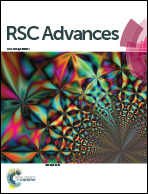Highly stable ITO/Zn2TiO4/Pt resistive random access memory and its application in two-bit-per-cell
Abstract
We discuss the fabrication procedure and device characteristics of ITO/Zn2TiO4/Pt resistive random-access memory (RRAM) at room temperature. Four different resistive states were obtained by applying different current compliances, all of which showed good retention characteristics with no obvious degradation and were individually distinguished after 10 000 s at a read voltage of 100 mV. The multilevel memory effect can be attributed to the combination of the radial growth of filaments and the formation of conductive filaments when applying different compliance current values during the set process. The set and reset voltages of the ITO/Zn2TiO4/Pt RRAM device were maintained within ±1 V. The device performed well at low operation voltages. The mechanisms of multilevel resistive switching characteristics were investigated to illustrate the multilevel carrier conduction phenomenon associated with Zn2TiO4-based RRAM devices. In this study, our group illustrated the application of zinc titanate (Zn2TiO4) in non-volatile memories for the first time.



 Please wait while we load your content...
Please wait while we load your content...